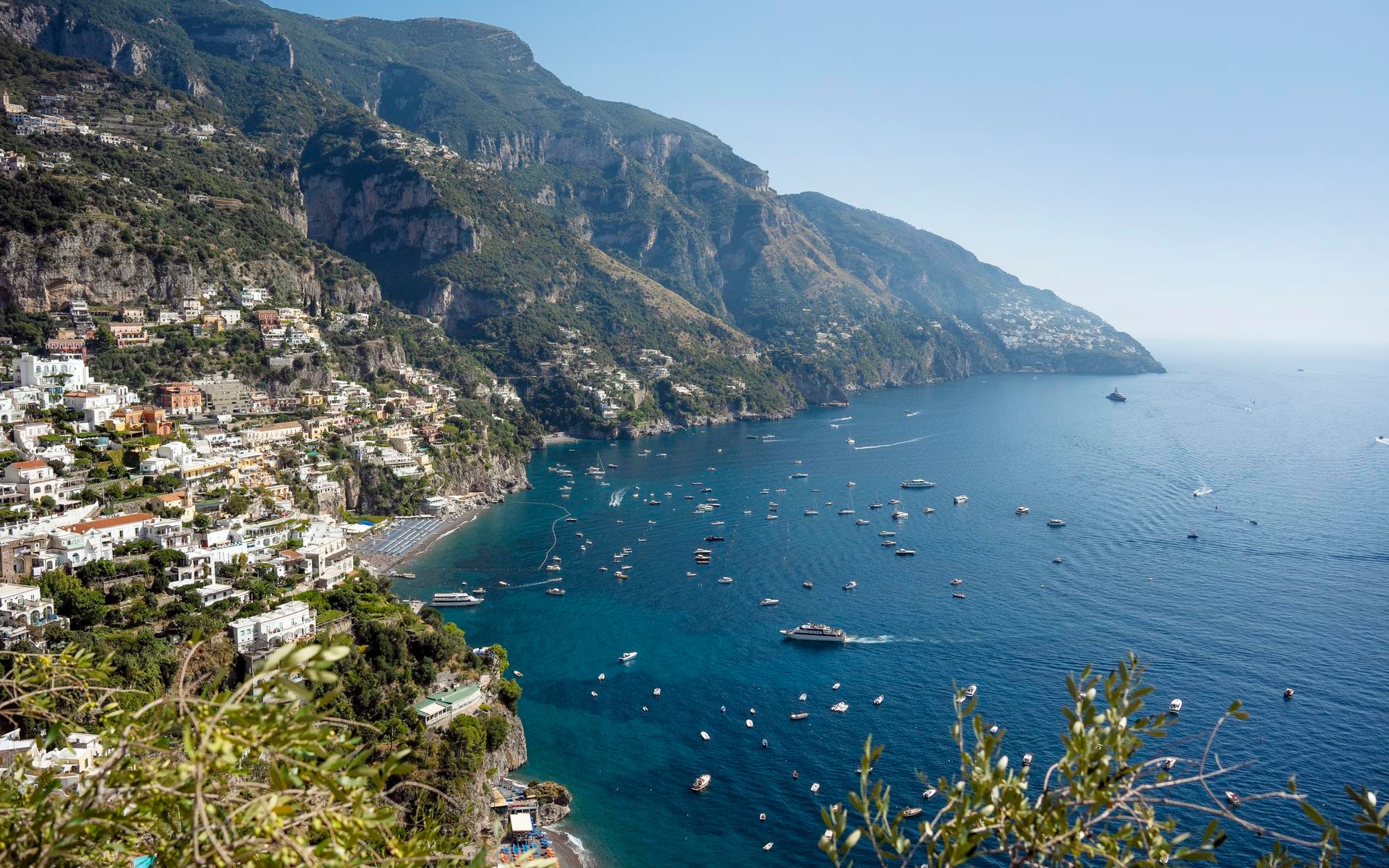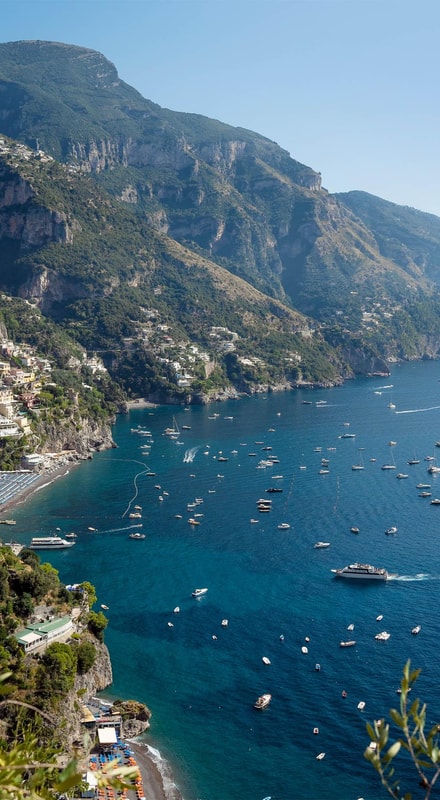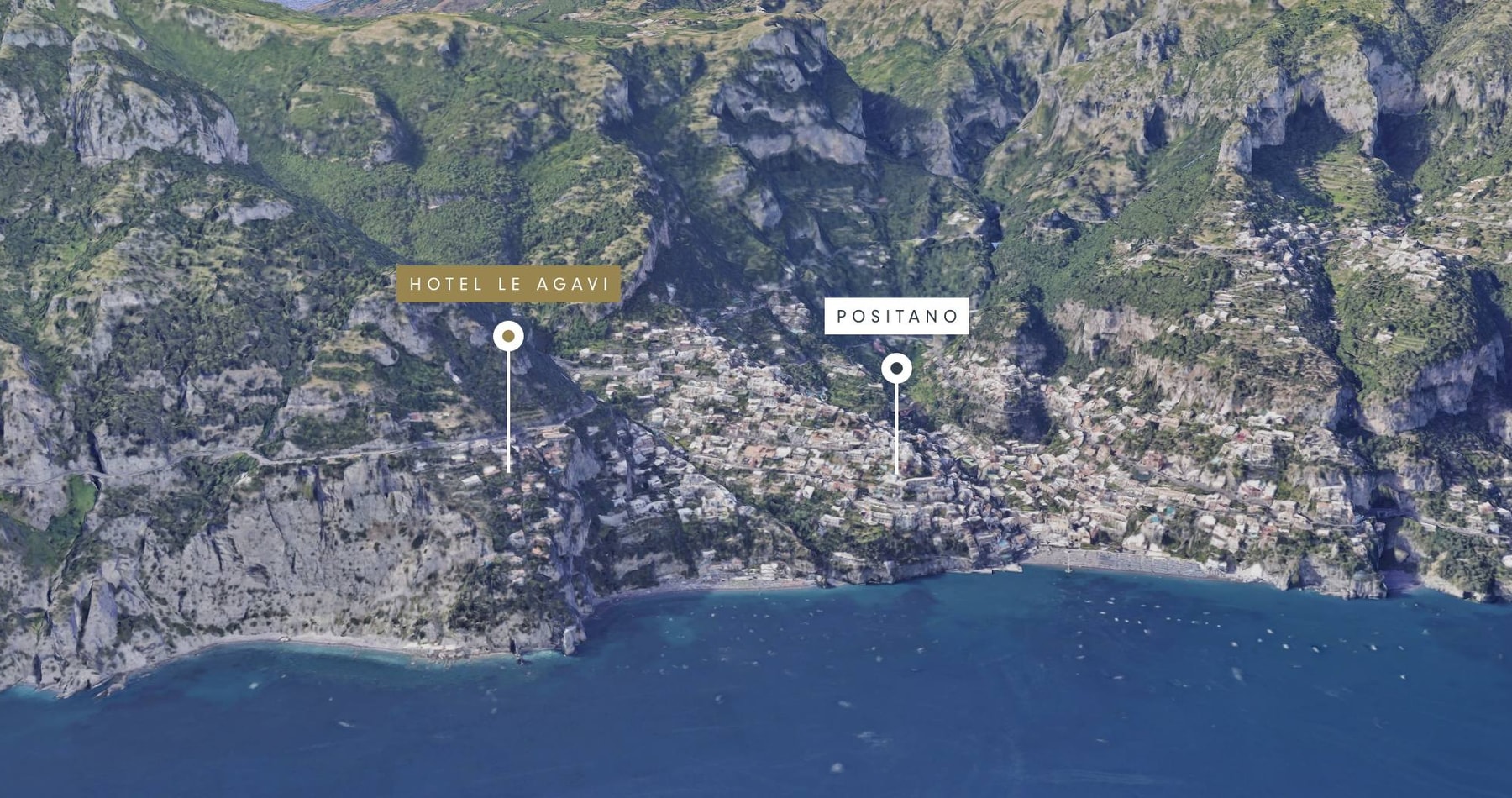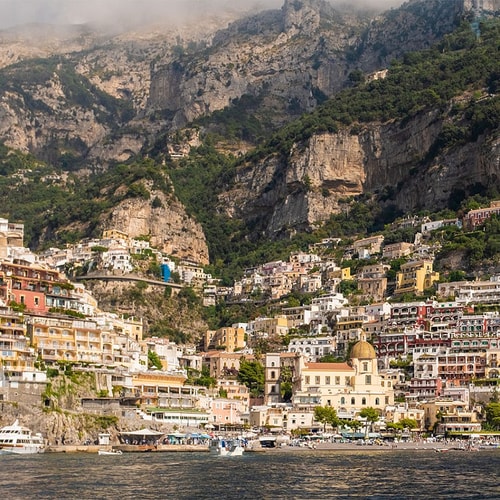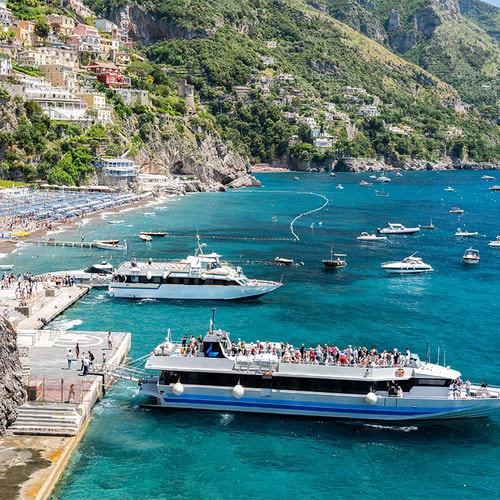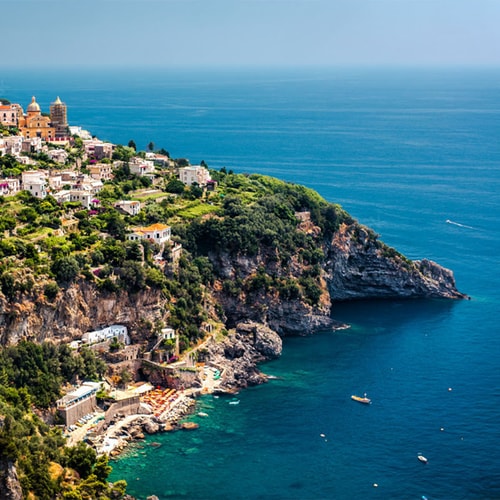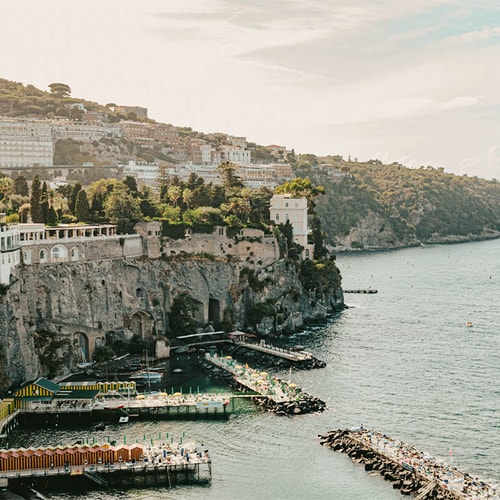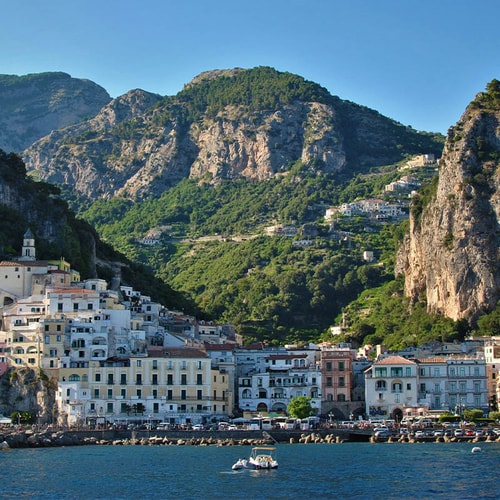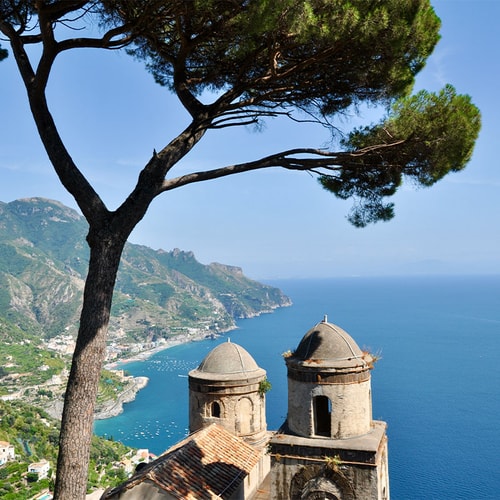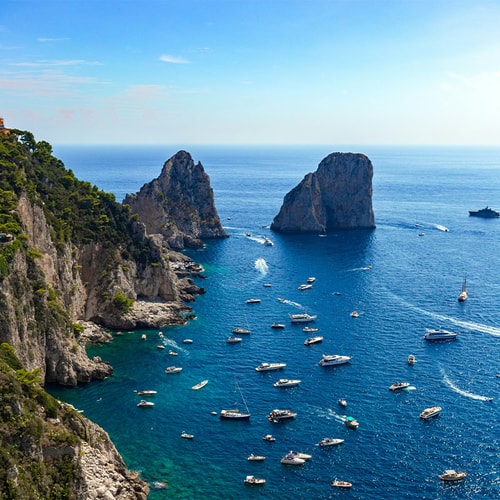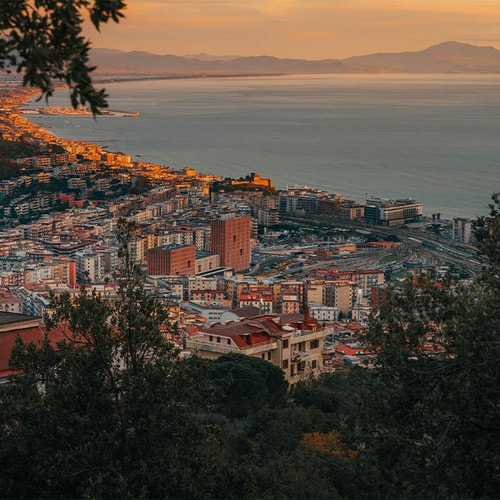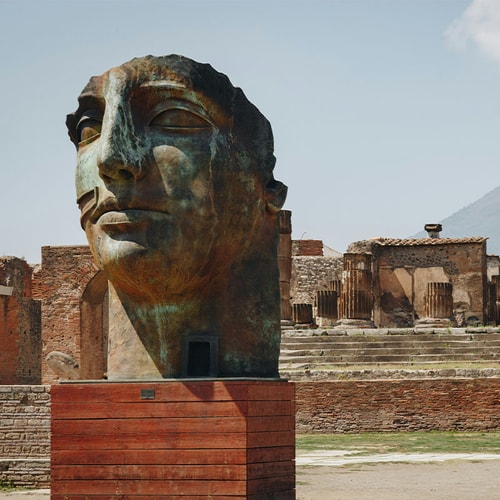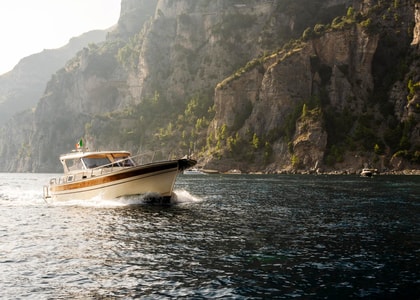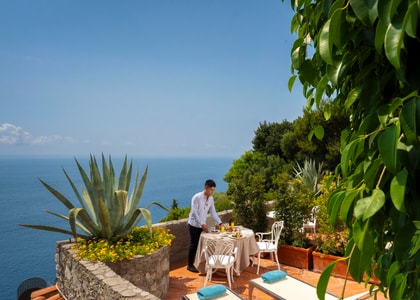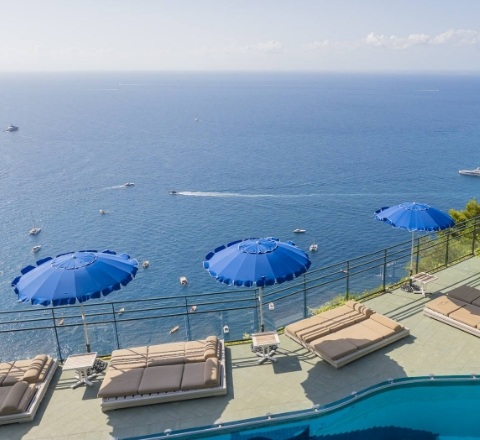By car
To reach us by car, take the A1 highway to Naples. Then continue on the A3 highway until you reach the Castellammare di Stabia exit. Continue on Route 145 towards the Amalfi Coast. Cross Meta di Sorrento and follow, on the left, the signs for Positano in the direction of SS163. Hotel Le Agavi graces the landscape just before the town center, marked by its distinctive entrance adorned with three fluttering flags. You can leave your car in the private parking lot available to our guests.

